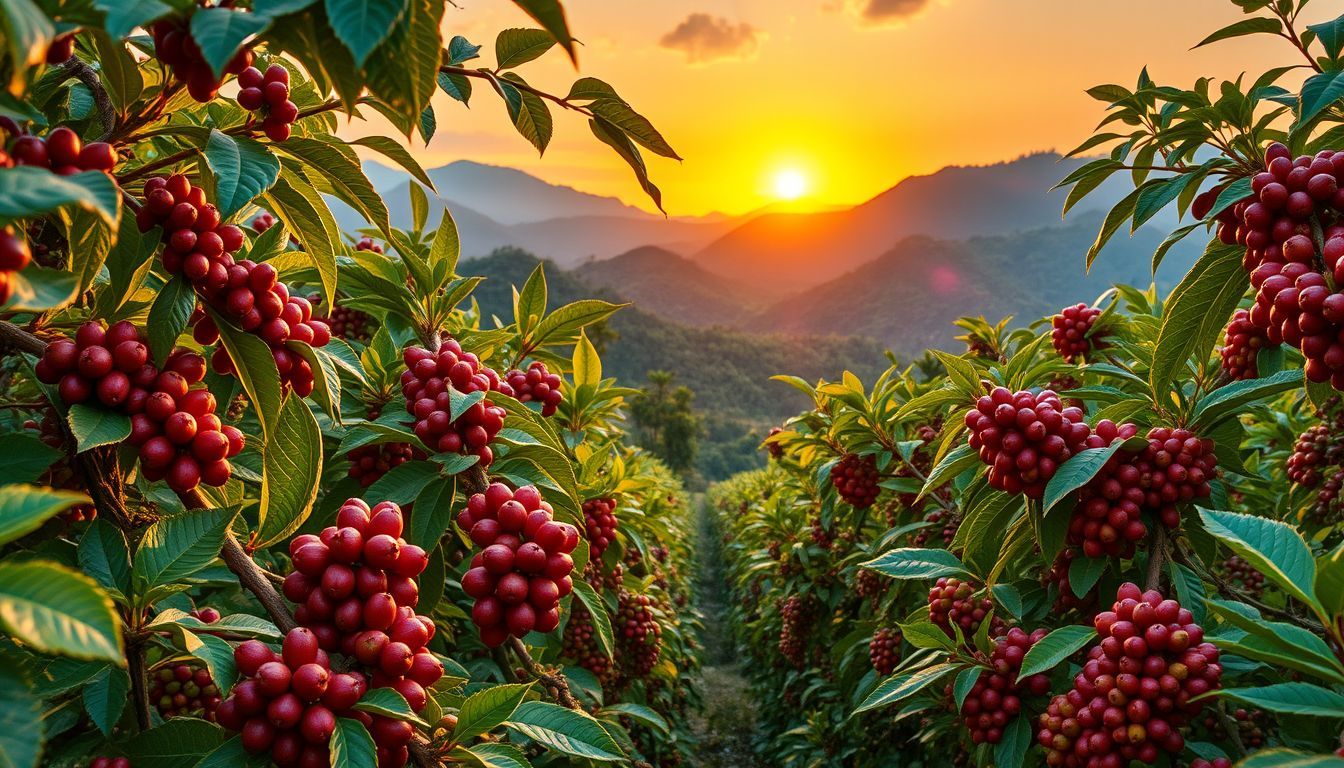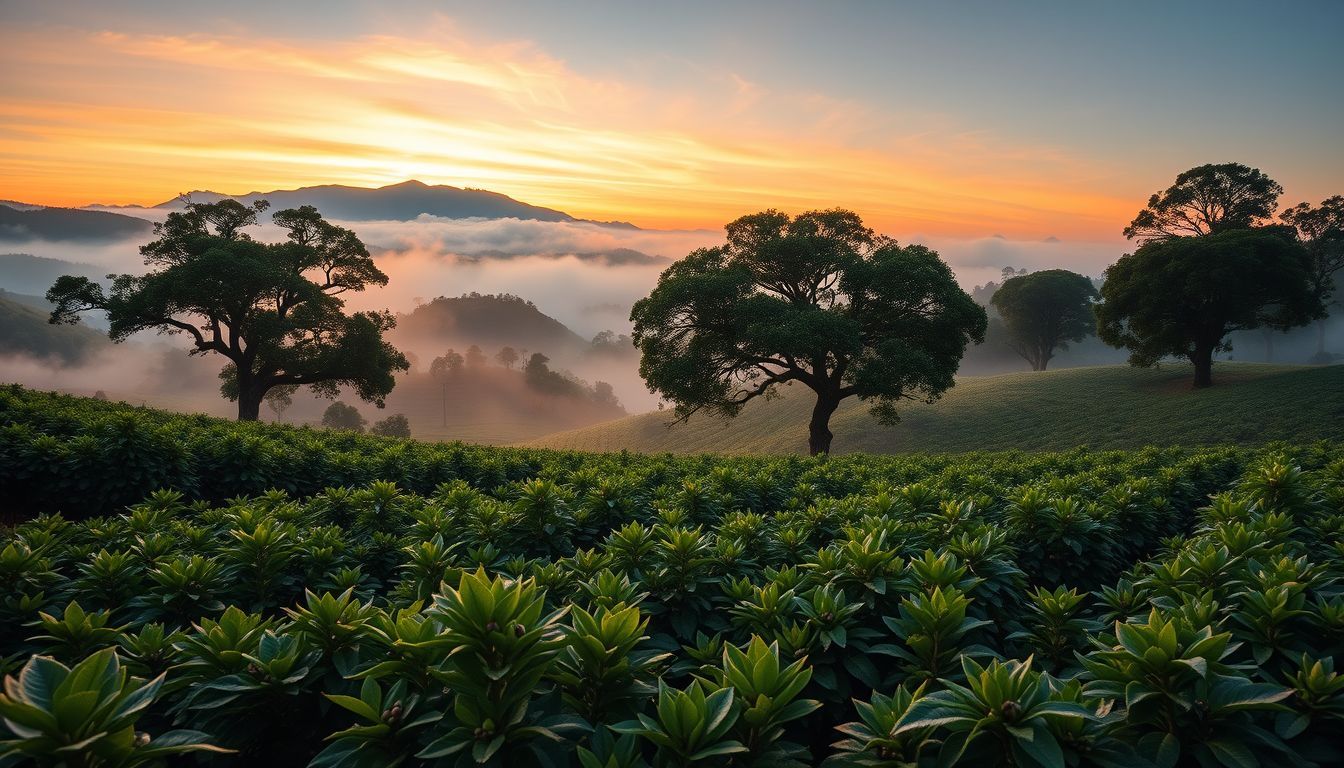The Impact of Coffee Plant Genetics on Flavor Consistency and Aging Potential
Explore how coffee plant genetics influence flavor consistency and aging potential, uncovering the role of cultivars, mutations, and breeding in shaping your daily cup.

Amazon Affiliate Disclosure
This post contains affiliate links. If you purchase through these links, we may earn a small commission at no additional cost to you.
The Impact of Coffee Plant Genetics on Flavor Consistency and Aging Potential
Hello, fellow coffee enthusiasts! I'm Imani Wells, a café owner and community coffee advocate. Today, let's embark on a journey to uncover how the genetics of coffee plants influence the flavors we cherish and how these flavors evolve over time.
The Genetic Roots of Coffee Flavor
At the heart of every coffee bean lies a complex genetic blueprint that dictates its potential flavor profile. The two primary species cultivated for coffee production are Coffea arabica and Coffea canephora (commonly known as Robusta). Each species, and the varieties within them, bring unique characteristics to our cups.
Arabica vs. Robusta:
- Arabica:
- Robusta:
Cultivars and Mutations: Shaping Flavor Profiles
Within these species, various cultivars and natural mutations have emerged, each contributing distinct flavors and characteristics.
- Bourbon:
- Typica:
Natural Mutations:
- Maragogipe:
- Caturra:
Breeding for Consistency and Quality
Modern breeding programs aim to develop coffee varieties that offer both flavor consistency and resilience against environmental challenges.
Starmaya:
- Development: An F1 hybrid resulting from a cross between a male-sterile Arabica plant and the Marsellesa variety.
- Characteristics: High yield potential, resistance to coffee leaf rust, and the ability to be propagated by seed, making it more accessible to farmers.
- Flavor Profile: When grown at higher altitudes, it produces a beverage of very good quality, combining the best traits of its parent plants.
- Development: A newer variety introduced in 2024, designed to thrive in cooler, high-altitude environments.
- Characteristics: High vitality and productivity, responsive to thinning practices to enhance quality.
- Flavor Profile: Bursting with floral aromas such as jasmine and orange blossom, with a fruit-forward profile when grown at medium altitudes.
Aging Potential: How Genetics Influence Flavor Over Time
The journey of a coffee bean doesn't end at harvest. How it ages, both before and after roasting, can significantly impact its flavor.
Green Bean Storage:
- Impact on Flavor: Over time, green coffee beans can undergo chemical changes, leading to alterations in flavor. Factors such as lipid oxidation and enzymatic degradation can result in reduced acidity and the development of woody or stale notes.
- Genetic Factors: Some varieties may have a longer shelf life due to their inherent chemical composition, affecting how flavors evolve during storage.
Roasted Bean Aging:
- Freshness Window: After roasting, coffee beans begin to release carbon dioxide and undergo oxidation. While some flavors can mellow and develop, prolonged exposure to air can lead to stale or flat tastes.
- Varietal Influence: The initial chemical makeup influenced by genetics can determine how well a coffee maintains its desirable flavors post-roast.
Conclusion
Understanding the genetics behind our beloved coffee beans offers a deeper appreciation for the flavors in our cups. From the species level down to individual mutations and breeding efforts, each genetic factor plays a role in flavor consistency and how those flavors age over time. As we continue to explore and innovate within the world of coffee, embracing this genetic diversity ensures a vibrant and flavorful future for all coffee lovers.
So, the next time you savor your favorite brew, take a moment to ponder the intricate genetic journey that brought those delightful flavors to your palate. Cheers to the science and art of coffee!

Imani Wells
For years, I found stories in the steam of the espresso machine and the conversations buzzing around my coffee shop. Now, I have the profound joy of putting those everyday moments of connection onto the page for you.


